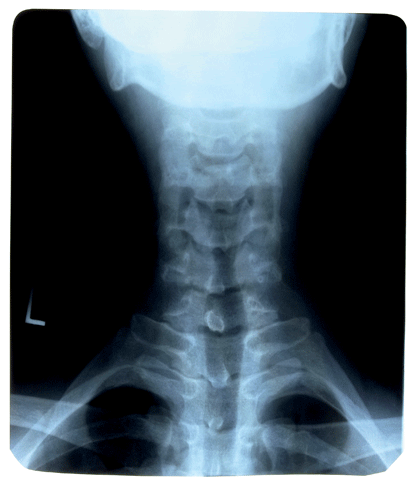

Diet and Health
What you need to know about Osteoporosis
As the population ages, osteoporosis is becoming a major source of disability – but there are ways to prevent and treat it.
By: Dr. David L. Katz*
Protection against osteoporosis should begin early in life. The greater the density of bone achieved then, the more mineral can be lost later before the threshold for osteoporosis is reached.
Paradoxically, the hardest part of our bodies, our skeleton, is a leading source of disability among adults in the
It has been said you can never step into the same river twice because the water keeps flowing by. By the same token, you can never step twice using the same bones, because they are continually turning over or remodeling.
Cells called osteoclasts resorb bone, chewing up the mineral matrix and releasing its components, notably calcium, into the bloodstream. They are opposed by osteoblasts: cells that draw calcium and other bone constituents from the bloodstream, and work like masons to build back new, revitalized bone. Without this yin/yang balance, fractures could never heal, and our bones would gradually accumulate tiny injuries from the jarring effects of daily activities. Thanks to this process, our bones perennially renew themselves.
For the first several decades of life, osteoblasts build a little more bone than osteoclasts degrade, increasing bone density. After that, the osteoclasts have the upper hand, and our bones slowly and inexorably thin. If they thin too much, we become vulnerable to fragility fractures -- those that occur with no or minimal trauma. This is the hallmark of osteopenia (thin bones) and osteoporosis, a type of osteopenia associated with disruption of normal bone architecture.
 Osteoporosis affects more than 10 million Americans (8 million of them women), and as many as 35 million are at risk due to low bone density, according to the National Osteoporosis Foundation (http://www.nof.org/osteoporosis/diseasefacts.htm). Roughly 40 percent of women will be affected during their lifetime. Risk factors for osteoporosis include advancing age, being female, being white or Asian, low body weight, lack of physical activity, smoking, excessive alcohol consumption, family history/genetics, insufficient intake of calcium and vitamin D, and being postmenopausal. While several items on this list are clearly beyond our control, like age and parents, the items we do control give us all abundant opportunities to prevent osteoporosis and its consequences.
Osteoporosis affects more than 10 million Americans (8 million of them women), and as many as 35 million are at risk due to low bone density, according to the National Osteoporosis Foundation (http://www.nof.org/osteoporosis/diseasefacts.htm). Roughly 40 percent of women will be affected during their lifetime. Risk factors for osteoporosis include advancing age, being female, being white or Asian, low body weight, lack of physical activity, smoking, excessive alcohol consumption, family history/genetics, insufficient intake of calcium and vitamin D, and being postmenopausal. While several items on this list are clearly beyond our control, like age and parents, the items we do control give us all abundant opportunities to prevent osteoporosis and its consequences.
Protection against osteoporosis should begin early in life. The greater the density of bone achieved then, the more mineral can be lost later before the threshold for osteoporosis is reached. Girls who fail to develop optimal bone density because they are too thin or do not menstruate regularly, due to an eating disorder or athletics, can be treated with oral contraceptives. These work by providing osteoblast-promoting estrogen.
Loss of estrogen at menopause is why bone loss accelerates then. For most of life bone thins at a rate of 0.5 percent a year in both men and women, but at menopause women may lose as much as 4 percent of bone mineral content a year, and more than a quarter of their skeleton over the decade following menopause. At this point, a good defense against bone problems is a generous intake of calcium and vitamin D from food sources, notably dairy, or in the form of supplements. Generally, 1,000 to 1,500 mg of calcium a day is advisable, along with 400 to 600 IU of vitamin. Men who eat more than women are likely to get enough calcium from the food they eat, but those who don't should take the same level of supplements.
Other dietary changes that may be helpful: Restrict your total protein intake to less than one-quarter of your total daily calories, and drink cola only occasionally. The reason is because protein is made up of acidic amino acids. To buffer this acid and maintain a stable pH, the body releases alkaline material from bone. In the process, calcium is lost and bone thins.
Cola, too, is acidic. A study at Tufts published in The American Journal of Clinical Nutrition in 2006 showed an association between cola intake and osteoporosis risk. In the study group of 2,500 adults near age 60 in the Framingham Osteoporosis Study, those reporting daily cola intake had 3 percent to 6 percent lower bone density measures on average than those with cola intake of less than once a month. A generally healthful, mostly plant-based diet is associated with optimal bone health.
The single most reliable strategy for defending against osteoporosis at any age is physical activity, especially the weight-bearing kind that builds bone, like walking, tennis or soccer, but not swimming, which is not a weight-bearing exercise. Bone epitomizes the "use it or lose it" principle, hanging on to its calcium more diligently when called upon to work. Early in life, weight-bearing exercise helps maximize bone density. Throughout life, the same kind of exercise helps preserve it.
But bone loss may occur at menopause nonetheless. If it does, women who are particularly vulnerable to osteoporosis might consider hormone replacement therapy. It is controversial for many reasons, but it does protect bone. Ask your doctor about HRT formulations that minimize any cardiovascular hazards.
Another option is the drug raloxifene, which mimics the action of estrogen on bone, while reducing breast cancer risk at the same time. There is also a class of drugs called bisphosphonates, like Fosamax and Boniva, that can be used to build back bone and prevent fractures.
Finally, any kind of exercise may reduce the risk of fracture by strengthening the muscles surrounding bone and improving
balance -- making falls less likely.
The United States Preventive Services Task Force recommends screening for osteoporosis by assessing bone density in all women starting at age 65, and in women at increased risk beginning at age 60 (http://www.ahrq.gov/clinic/uspstf/uspsoste.htm). The standard test for measuring bone density is called DXA, a specialized x-ray. If you are a woman nearing age 60, or care for one, ask your or her doctor if the test is warranted.
The longer we live, the more time there is for our bones to thin, and the more universal the threat of osteoporosis becomes. Proper attention to diet, supplements, physical activity, screening and treatment when necessary provides a robust strategy that all of us can use to protect the strongest, yet surprisingly vulnerable, part of our bodies.